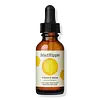What's inside
What's inside
 Key Ingredients
Key Ingredients

 Benefits
Benefits

 Concerns
Concerns

No concerns
 Ingredients Side-by-side
Ingredients Side-by-side

Water
Skin ConditioningGlycerin
HumectantVolcanic Soil
Skin ConditioningAloe Barbadensis Sprout
HumectantSilk Amino Acids
HumectantTocopherol
AntioxidantAscorbic Acid
AntioxidantCitrus Aurantium Dulcis Peel Oil Expressed
PerfumingLeontopodium Alpinum Meristem Cell Culture
Skin ConditioningXanthan Gum
EmulsifyingGlycine Soja Oil
Emollient1,2-Hexanediol
Skin ConditioningParfum
MaskingEthylhexylglycerin
Skin ConditioningAmylopectin
Hyaluronic Acid
HumectantCitrus Limon Peel Oil
MaskingCitrus Paradisi Peel Oil
MaskingCitric Acid
BufferingPotassium Sorbate
PreservativeSodium Levulinate
Skin ConditioningLimonene
PerfumingBenzyl Alcohol
PerfumingLinalool
PerfumingCitral
PerfumingWater, Glycerin, Volcanic Soil, Aloe Barbadensis Sprout, Silk Amino Acids, Tocopherol, Ascorbic Acid, Citrus Aurantium Dulcis Peel Oil Expressed, Leontopodium Alpinum Meristem Cell Culture, Xanthan Gum, Glycine Soja Oil, 1,2-Hexanediol, Parfum, Ethylhexylglycerin, Amylopectin, Hyaluronic Acid, Citrus Limon Peel Oil, Citrus Paradisi Peel Oil, Citric Acid, Potassium Sorbate, Sodium Levulinate, Limonene, Benzyl Alcohol, Linalool, Citral
Water
Skin ConditioningSodium Ascorbyl Phosphate
AntioxidantC12-15 Alkyl Benzoate
AntimicrobialGlycerin
HumectantSodium Levulinate
Skin ConditioningSodium Anisate
AntimicrobialSalvia Sclarea Oil
MaskingCitrus Grandis Fruit Extract
AstringentHyaluronic Acid
HumectantAmorphophallus Konjac Root Powder
AbrasiveAloe Barbadensis Leaf
MaskingTocotrienols
Skin ConditioningFerulic Acid
AntimicrobialChamomilla Recutita Extract
Skin ConditioningSodium Phytate
Xanthan Gum
EmulsifyingHydroxyethylcellulose
Emulsion StabilisingWater, Sodium Ascorbyl Phosphate, C12-15 Alkyl Benzoate, Glycerin, Sodium Levulinate, Sodium Anisate, Salvia Sclarea Oil, Citrus Grandis Fruit Extract, Hyaluronic Acid, Amorphophallus Konjac Root Powder, Aloe Barbadensis Leaf, Tocotrienols, Ferulic Acid, Chamomilla Recutita Extract, Sodium Phytate, Xanthan Gum, Hydroxyethylcellulose
 Reviews
Reviews

Ingredients Explained
These ingredients are found in both products.
Ingredients higher up in an ingredient list are typically present in a larger amount.
Glycerin is already naturally found in your skin. It helps moisturize and protect your skin.
A study from 2016 found glycerin to be more effective as a humectant than AHAs and hyaluronic acid.
As a humectant, it helps the skin stay hydrated by pulling moisture to your skin. The low molecular weight of glycerin allows it to pull moisture into the deeper layers of your skin.
Hydrated skin improves your skin barrier; Your skin barrier helps protect against irritants and bacteria.
Glycerin has also been found to have antimicrobial and antiviral properties. Due to these properties, glycerin is often used in wound and burn treatments.
In cosmetics, glycerin is usually derived from plants such as soybean or palm. However, it can also be sourced from animals, such as tallow or animal fat.
This ingredient is organic, colorless, odorless, and non-toxic.
Glycerin is the name for this ingredient in American English. British English uses Glycerol/Glycerine.
Learn more about GlycerinHyaluronic acid is naturally found in healthy skin. It is a humectant, meaning it draws moisture to your skin.
This ingredient helps hydrate, soothe, and protect the skin.
What makes hyaluronic acid so hydrating? It has the capacity to bind or hold large amounts of water.
Fun fact: It is already naturally found in our bodies, such as the fluids of our eyes and our joints.
Studies find this ingredient to have anti-inflammatory and anti-microbial properties. This can help speed up wound-healing.
Hyaluronic acid can be irritating if the molecule has a low-molecular weight, or if the molecules are small.
One study found low-molecular weight hyaluronic acid to be pro-inflammatory, meaning some people may experience irritation. This is because our bodies use hyaluronic acid in the wound-healing process to signal to our bodies, via irritation, that something needs healing.
The same study found high-molecular weight hyaluronic acid to be anti-inflammatory.
These are some other common types of Hyaluronic Acid:
Learn more about Hyaluronic AcidSodium levulinate is the a sodium salt of Levulinic Acid. If dissolved in an aqueous solution, the two ingredients become identical.
It is a skin conditioning agent, meaning it helps soften and hydrate your skin.
According to Cosmetic Ingredient Review, the highest amounts of sodium levulinate are found in mouthwashes at 0.62%.
Learn more about Sodium LevulinateWater. It's the most common cosmetic ingredient of all. You'll usually see it at the top of ingredient lists, meaning that it makes up the largest part of the product.
So why is it so popular? Water most often acts as a solvent - this means that it helps dissolve other ingredients into the formulation.
You'll also recognize water as that liquid we all need to stay alive. If you see this, drink a glass of water. Stay hydrated!
Learn more about WaterXanthan gum is used as a stabilizer and thickener within cosmetic products. It helps give products a sticky, thick feeling - preventing them from being too runny.
On the technical side of things, xanthan gum is a polysaccharide - a combination consisting of multiple sugar molecules bonded together.
Xanthan gum is a pretty common and great ingredient. It is a natural, non-toxic, non-irritating ingredient that is also commonly used in food products.
Learn more about Xanthan Gum